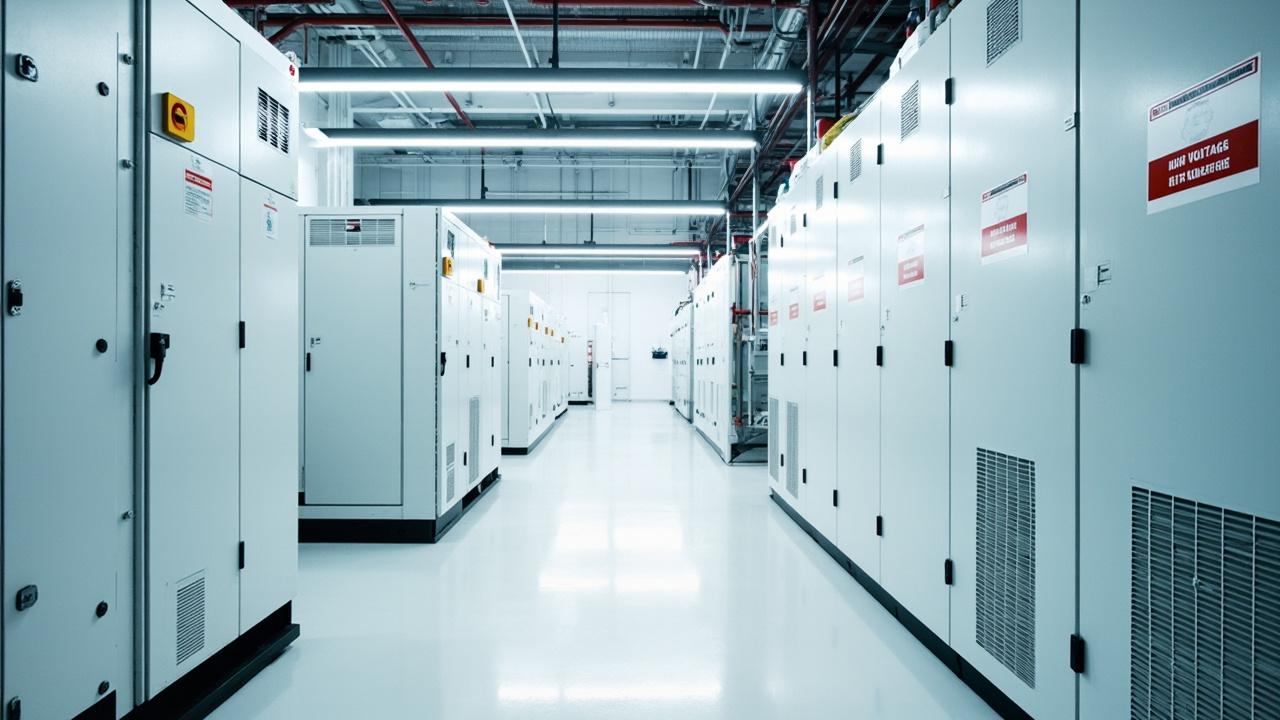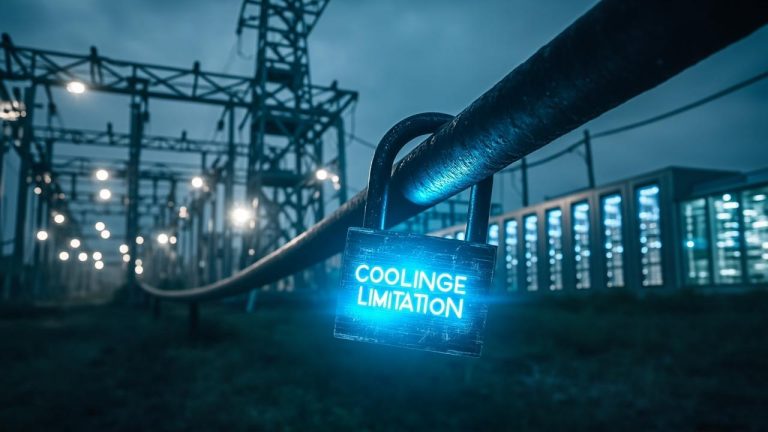Introduction
High voltage design is rapidly transitioning from niche to mainstream. Consider the electric vehicle (EV) market. Just a decade ago, 400V systems were the norm. Today, leading manufacturers are embracing 800V architectures and beyond, and that’s just the tip of the iceberg. High voltage adoption is exploding across diverse sectors like renewable energy, data centers, and industrial automation. This isn’t merely a fad; it signifies a fundamental shift in how we approach power management and system design.
But what exactly constitutes “high voltage”? The answer isn’t always straightforward, as it varies depending on the specific application and industry standards.
Generally, we’re talking about systems operating above 50V AC or 60V DC, but in many cases, especially in automotive or industrial settings, “high voltage” refers to systems operating at hundreds or even thousands of volts. Regardless of the precise definition, the overarching trend is clear: designers and engineers are increasingly pushing the voltage envelope to unlock new levels of performance and efficiency.
This transition offers significant advantages. Transitioning to higher voltage unlocks tangible benefits in efficiency, performance, and cost-effectiveness. This makes it a strategic move for forward-thinking businesses. By embracing higher voltage, engineers and designers can reduce losses, minimize component size, and potentially even lower overall system costs. While the initial move might seem daunting, the long-term rewards make it a compelling proposition for anyone seeking to optimize their products and systems for the future.
Efficiency Unleashed
The cornerstone of understanding the efficiency gains offered by high voltage systems lies in the fundamental relationship between power, voltage, and current, as defined by the equation P = VI (Power = Voltage x Current). For a given power requirement, increasing the voltage proportionally reduces the current.
This seemingly simple principle has profound implications for minimizing energy losses within a system. Imagine trying to deliver a specific amount of water – increasing the diameter of the pipe (voltage equivalent) would allow the same water volume to flow with less pressure (current equivalent).
The Impact on I²R Losses
The most significant source of power loss in electrical systems is resistive heating, often referred to as I²R loss, where ‘I’ represents current and ‘R’ represents resistance. This loss is directly proportional to the square of the current. Therefore, even a modest reduction in current due to increased voltage can dramatically reduce these losses.
For example, doubling the voltage reduces the current by half, resulting in a fourfold reduction in I²R losses. This translates to less energy wasted as heat and more power delivered to the intended load, substantially improving overall system efficiency. A comprehensive understanding of high voltage design is therefore critical to minimize losses.
Component Lifespan and System Reliability
Beyond just energy savings, the reduced heat generation associated with lower currents extends the lifespan of components and enhances overall system reliability. Excessive heat is a primary cause of component failure, accelerating degradation of insulation, solder joints, and semiconductor materials.
By minimizing heat, high voltage systems contribute to a cooler operating environment, reducing thermal stress on components and significantly improving their long-term reliability. This leads to less frequent maintenance, reduced downtime, and a longer operational lifespan for the entire system, further enhancing the economic benefits of adopting higher voltage designs.
Performance Boost
High voltage systems aren’t just about saving energy; they unlock enhanced performance capabilities that lower voltage counterparts simply can’t match. A key advantage is the ability to deliver significantly higher power levels within the same physical dimensions. Consider electric vehicle drivetrains, where space is at a premium.
By increasing the voltage, engineers can pack more power into the motor and associated electronics without increasing their size or weight. This is crucial for achieving the desired acceleration and top speed. The ability to transfer more power through a smaller cross-sectional area unlocks new capabilities for high power applications.
Moreover, high voltage design facilitates improved dynamic response. This translates to quicker reactions to changes in demand. Think about a robotic arm in an industrial setting. A high voltage system enables faster and more precise movements, increasing productivity.
In electric vehicles, this improved responsiveness manifests as quicker acceleration and a more engaging driving experience. The transient performance, or the system’s ability to rapidly adjust to changing conditions, is also enhanced. This is vital in applications where instantaneous power adjustments are critical.
Another benefit often overlooked is the reduction in ripple current. Ripple current, an unwanted AC component superimposed on the DC signal, can cause inefficiencies and premature component failure. High voltage systems, due to their lower current demands, generally exhibit lower ripple current, contributing to smoother operation, less stress on components, and improved overall system lifespan. The use of better components and more efficient use of power makes for an overall better system.
| Performance Metric | Benefit of High Voltage |
|---|---|
| Power Density | Higher power within the same physical space |
| Dynamic Response | Faster reaction to changing demands |
| Ripple Current | Reduced ripple, smoother operation |
Shrinking the Footprint
The advantages of moving to higher voltage systems extend beyond efficiency and performance; they also significantly impact the physical size and weight of your overall system. Lower current, a direct result of increased voltage for a given power level, allows for the implementation of smaller, lighter components throughout the design. This miniaturization contributes to higher system density, meaning more power can be packed into a smaller volume.
This is particularly crucial in applications where space and weight are paramount, such as aerospace, portable electronics, and even modern electric vehicles. The cascading effects of this footprint reduction can be transformative.
Reduced Conductor Size and Weight
One of the most immediately noticeable benefits is the ability to use smaller gauge wires. The current-carrying capacity of a wire dictates its required cross-sectional area. Since high voltage design inherently reduces current, the necessary wire gauge shrinks accordingly.
This translates to lighter and more flexible wiring harnesses, simplifying installation and reducing overall system weight. Think about the impact on an electric aircraft, where every pound saved translates to increased range or payload capacity. This effect ripples outward, impacting connector size and weight as well, further compounding the space and weight savings.

Component Miniaturization
Passive components like inductors and capacitors also benefit significantly from operating at higher voltages. For example, the size of an inductor is heavily influenced by the current it needs to handle. By reducing the current, the required core size and winding thickness can be decreased, resulting in a smaller and lighter inductor.
Similarly, capacitors in a high voltage system can often be physically smaller for the same capacitance and voltage rating compared to those in a lower voltage system handling the same power. This component level miniaturization adds up across the entire system, enabling designers to create significantly more compact and dense power electronics. Consider a DC-DC converter; by increasing the input voltage, the size and weight of the converter can be drastically reduced, allowing for integration into tighter spaces.
Cost Optimization
While the upfront investment in specialized components tailored for high voltage design might initially appear as a barrier, a comprehensive lifecycle cost analysis often reveals a surprisingly favorable economic outcome. The enhanced efficiency inherent in higher voltage systems translates directly into reduced energy consumption, leading to significant savings over the operational lifespan of the equipment.
In applications where energy costs are a major factor, such as data centers or large-scale industrial facilities, these savings can quickly offset the initial investment and provide a compelling return. Furthermore, government incentives and rebates for energy-efficient technologies can further improve the financial viability of high-voltage solutions.
One area where cost savings are immediately apparent is in cabling. Because high voltage systems operate at lower currents for the same power level, smaller gauge wires can be used without compromising performance or safety.
Copper and aluminum are significant cost drivers, and reducing the amount of material needed for wiring harnesses can lead to substantial savings, especially in applications requiring long cable runs, such as electric vehicle charging infrastructure or renewable energy installations. The reduction in cable size also contributes to lower weight, which in turn, can lead to additional cost benefits in transportation and installation.
Beyond cabling, improved thermal management contributes to cost optimization. The lower currents in high-voltage systems generate less heat, reducing the burden on cooling systems. This can lead to the use of smaller, less expensive heat sinks or even eliminate the need for active cooling in some applications.
This not only reduces the initial cost of the cooling system but also lowers ongoing maintenance costs and improves overall system reliability, thereby avoiding costly downtime and repairs. A more efficient thermal design also extends the lifespan of sensitive electronic components, further reducing replacement costs and contributing to a lower total cost of ownership.
| Cost Factor | Impact of High Voltage | Benefit |
|---|---|---|
| Energy Consumption | Reduced losses due to lower current | Lower operating costs |
| Cable Costs | Smaller gauge wires can be used | Reduced material costs |
| Cooling Requirements | Lower heat generation | Reduced cooling system costs |
| Component Lifespan | Lower operating temperatures | Reduced replacement costs |
Applications Across Industries
High voltage systems are not confined to a single sector; instead, they are revolutionizing a wide array of industries, each reaping unique rewards from this technological shift. Consider the electric vehicle (EV) market. Automakers are rapidly adopting high-voltage battery systems (typically 400V or 800V) to increase driving range, improve charging times, and enhance overall vehicle performance. This transition necessitates sophisticated motor drives and charging infrastructure capable of handling these higher voltages, spurring innovation across the entire EV ecosystem.
The renewable energy sector is another prime example of high voltage’s transformative power. Solar inverters, responsible for converting DC power from solar panels into AC power for the grid, are increasingly utilizing high-voltage designs to minimize losses and maximize efficiency. Similarly, wind turbine generators are employing high-voltage systems to transmit power over long distances with minimal energy dissipation.
This is especially crucial for offshore wind farms, where transmitting power back to land can be a significant challenge. These high voltage designs allow the energy generated to be effectively transmitted across longer distances.
Beyond transportation and energy, industrial automation is also benefiting significantly. High-voltage motor drives are becoming increasingly common in robotics and other industrial equipment, enabling precise control, increased power output, and reduced energy consumption. Moreover, data centers are exploring high-voltage DC (HVDC) power distribution as a means to enhance efficiency and reduce their carbon footprint.
By eliminating multiple AC-DC conversion stages, HVDC systems minimize energy losses and improve overall system reliability. These diverse applications demonstrate the versatility and widespread appeal of high-voltage technology across various sectors.
Navigating the Challenges
Of course, here is the section you requested:
Safety is paramount when dealing with high voltage systems, and ignoring this fact can lead to catastrophic results. Robust insulation is crucial to prevent electrical arcing and short circuits. This includes selecting appropriate dielectric materials for wires, connectors, and enclosures, and ensuring adequate spacing between conductors.
Shielding is another critical aspect, particularly in applications where electromagnetic interference (EMI) could disrupt sensitive electronics or pose a safety hazard. Proper grounding techniques are essential to provide a low-impedance path for fault currents, minimizing the risk of electric shock.
Here is a list of crucial areas to focus on:
- Insulation Coordination
- Shielding Effectiveness
- Grounding and Bonding
Adhering to industry-recognized safety standards and regulations is non-negotiable. Organizations such as IEC, UL, and IEEE publish comprehensive guidelines for the design, testing, and certification of high voltage equipment. Compliance with these standards not only ensures the safety of personnel and equipment but also demonstrates a commitment to responsible engineering practices.
Depending on the specific application and voltage level, additional certifications or approvals may be required. Successful implementation of a high voltage design hinges on thorough knowledge and strict adherence to these standards.
Furthermore, specialized components are often required in high-voltage applications. Standard components may not be able to withstand the voltage stresses or provide the necessary insulation. High-voltage capacitors, resistors, diodes, and transistors are designed with specific characteristics to ensure reliable operation in demanding environments.

Choosing the right components and integrating them properly requires specialized expertise in high-voltage design techniques. Seeking guidance from experienced engineers or consultants can significantly reduce the risk of design flaws and ensure the safety and reliability of the system.
Future Trends
The landscape of high voltage systems is not static; it’s a dynamic realm fueled by ongoing research, technological advancements, and the relentless pursuit of greater efficiency and performance. One of the most significant trends shaping the future is the increasing adoption of wide-bandgap (WBG) semiconductors like silicon carbide (SiC) and gallium nitride (GaN).
These materials offer superior characteristics compared to traditional silicon, including higher breakdown voltage, faster switching speeds, and lower on-resistance. This translates into more efficient power conversion, reduced heat generation, and the ability to operate at higher frequencies, ultimately enabling smaller, lighter, and more cost-effective high voltage design.
Beyond WBG semiconductors, we’re also witnessing the rise of advanced control algorithms and topologies tailored for high voltage applications. Sophisticated modulation techniques, such as multi-level converters and soft-switching methods, are being implemented to minimize switching losses and improve overall system efficiency.
Furthermore, the integration of artificial intelligence (AI) and machine learning (ML) is paving the way for predictive maintenance and optimized energy management in high voltage systems. AI-powered monitoring systems can analyze real-time data to detect anomalies, predict potential failures, and optimize system performance based on varying load conditions and environmental factors.
Looking ahead, the potential applications of high voltage systems are expanding beyond traditional sectors. Microgrids, which are localized energy grids that can operate independently or in conjunction with the main power grid, are increasingly relying on high-voltage DC (HVDC) technology for efficient power distribution. Energy storage systems, such as large-scale battery arrays, are also leveraging high voltage architectures to maximize energy density and minimize conversion losses.
Moreover, emerging fields like plasma technology and high-energy physics are pushing the boundaries of high voltage engineering, driving innovation in areas like pulsed power systems, particle accelerators, and fusion energy research. These trends signify a future where high voltage systems play an increasingly vital role in powering a sustainable and technologically advanced world.
Conclusion
The transition to high voltage systems isn’t merely a fleeting trend; it’s a fundamental shift towards greater efficiency, enhanced performance, and optimized cost-effectiveness across a diverse range of industries. By revisiting the core arguments, we’ve demonstrated how embracing higher voltages translates into tangible benefits, from minimizing energy losses and maximizing power delivery to shrinking system footprints and reducing long-term operational expenses.
The examples highlighted, ranging from the burgeoning electric vehicle sector to the increasingly demanding data center landscape, vividly illustrate the transformative potential of this technology.
While acknowledging the inherent challenges associated with high voltage design, particularly regarding safety protocols and specialized component requirements, it’s clear that these hurdles are far outweighed by the strategic advantages. Adherence to stringent safety standards, coupled with the appropriate design expertise and resources, ensures that high-voltage systems can be implemented reliably and securely.
Moreover, ongoing advancements in component technology, such as wide-bandgap semiconductors, are continually pushing the boundaries of what’s achievable, paving the way for even more efficient and compact high-voltage solutions in the future.
The evidence overwhelmingly suggests that stepping up to high voltage is a decisive step forward for organizations seeking to innovate, optimize, and thrive in an increasingly competitive landscape. We encourage you to consider the transformative potential of high voltage solutions for your specific applications. Unlock the power of efficiency, performance, and cost optimization by embracing the high voltage revolution today.
Frequently Asked Questions
What are the key safety considerations in high voltage design?
Designing with high voltage necessitates a focus on preventing electric shock, fire hazards, and equipment damage. Thorough insulation of all high-voltage components is paramount.
Proper grounding techniques are essential to safely direct fault currents. Implementing robust interlock systems that automatically de-energize the circuit during maintenance or in case of a fault is also vital, alongside clear warning labels and restricted access to high voltage areas.
What materials are best suited for high voltage insulation and why?
Materials like epoxy resins, silicone elastomers, and certain ceramics excel in high voltage insulation due to their high dielectric strength, meaning they can withstand large electric fields without breaking down and conducting electricity. These materials also often possess properties like high thermal conductivity for heat dissipation, chemical inertness to resist degradation, and low moisture absorption to maintain insulating properties over time.
The specific choice often depends on the application and operating environment.
How do you mitigate the risk of arcing and corona discharge in high voltage equipment?
Mitigating arcing and corona discharge involves careful design to minimize electric field concentrations. Smooth, rounded conductor surfaces, rather than sharp edges, reduce field enhancement. Adequate spacing between conductors and grounded surfaces prevents arc initiation. Encapsulation of high voltage components in insulating materials or pressurized gases such as sulfur hexafluoride (SF6) further suppresses ionization and discharge phenomena, thereby improving overall reliability.
What are the common challenges in designing high voltage power supplies?
Designing high voltage power supplies presents several challenges, including managing high voltage stress, ensuring stable voltage regulation across varying load conditions, and minimizing electromagnetic interference (EMI). Achieving efficient energy conversion is also critical. Furthermore, ensuring the power supply meets stringent safety standards and regulatory requirements is essential, often requiring specialized components and sophisticated control circuitry.
What simulation software is commonly used for high voltage design analysis?
Simulation software like COMSOL Multiphysics, ANSYS Maxwell, and CST Studio Suite are frequently utilized for high voltage design analysis. These tools allow engineers to model electric field distributions, analyze insulation performance, and predict the onset of arcing or corona discharge.
They also help in optimizing the design for factors like voltage stress reduction and thermal management, ultimately improving the safety and reliability of high voltage equipment.




